By Garry Beuk. Published on Egyptological, Magazine Edition 2, September 9th 2011,
Introduction
The early explorers of Egypt, often associated with ideas of adventure, discovery and buried treasure, fascinate many people interested in the earliest days of Egyptology. No name elicits a stronger and often negative reaction from scholars than that of Giovanni Belzoni, who explored Egypt in the early 1800s. Belzoni has often been depicted as a villain, an irresponsible treasure hunter who destroyed valuable antiquities as he blazed through Egypt in a search for gold. It is this image of Belzoni that forms many people’s preconceptions.
I was first introduced to another perspective on Belzoni through the pages of archaeologist Donald P. Ryan’s fascinating book, Beneath the Sands of Egypt. Ryan summarizes his position by stating of Belzoni: “His early documentary efforts are clearly to his credit, and he should rightfully take his place as a genuine pioneer of Egyptology and a protoarchaeologist who sood both figuratively and literally above his peers” (Ryan 2010). Ryan makes it clear that there was more to Belzoni than his popular reputation suggests. I was intrigued. If Belzoni was not the destructive thief portrayed by popular history, then why had he obtained this reputation? And what were his contributions to Egyptology?
The answers to these questions surprised me. It is my hope that a balanced view of Belzoni’s work in Egypt will encourage people to question conventional wisdom and popular opinion about the colourful characters that comprise the early history of Egyptology.
Early Career
Giovanni Battista Belzoni was born in Padua, Italy, on November 5th 1778, one of four children [Figure 1]. As the son of a barber he was expected to pursue his father’s profession but Belzoni had adventure in his blood and, contrary to his father’s wishes, he left for Rome at the age of sixteen to experience more of the world. In Rome he worked on the building of some of Rome’s great fountains, learning the art of hydraulics, an experience that would help to prepare him for his first appointment in Egypt.
Only four years after his arrival in Rome, Belzoni fled Italy to escape Napoleon’s army. He travelled to Holland and eventually reached London in 1803. A towering figure at 6’7″, with an excellent physique, Belzoni found work at Sadler’s Wells Theatre where he perfected his act as a strong man [Figure 2]. The highlight of the act was his human pyramid display where he wore a custom-made 127 pound steel frame that contained seats on which 12 randomly selected people would sit. Belzoni would take this full weight on his shoulders and walk around the stage, waving flags, with little visible effort. The act was a huge success, running for three months and giving the massive Belzoni the label of the “Patagonian Sampson.”
Shortly after his arrival in England Belzoni met and married Sarah Bane (1783-1860), Belzoni built on his successes as a strong man and for the next eight years he travelled, with Sarah, throughout Britain as a member of a traveling circus as “The Great Belzoni,” perfecting his skills in weight lifting, the use of levers and rollers, balancing techniques and colorful water acts. Belzoni and his wife were inseparable, finding their way through Europe to Sicily and eventually Malta. It was in Malta where the Egyptian part of Belzoni’s story and his legacy as the founder of Egyptology begins.
Belzoni arrives in Egypt
Early Nineteenth century Egypt, ruled by the Ottoman Pasha Muhammad Ali, was a dangerous place in urgent need of modernization. Ali recognized the need for reform and sought to model Egypt on European states. One of his goals was to improve efficiencies throughout the country by introducing modern technology. His agents were charged with the responsibility of finding individuals to do this and they were spread throughout Europe.
In Malta one of Ali’s agents, Ishmail Gibraltar, was introduced to Belzoni. A friendship was quickly established, and Belzoni convinced Gibraltar that a water wheel would revolutionize Nile irrigation. This simple design, essentially a crane with a drum-shaped walking wheel would enable the pump to be operated by one ox using the force of its weight, instead of the four oxen used in the existing system. This could have had a potentially huge impact on the economy. the machine in use at the time, and for thousands of years prior, was called a saqquia and was an extremely inefficient single wheel that was driven by four oxen. Belzoni estimated that his invention would not only produce six times the amount of water that the current system did, but would also save on expenses by reducing the number of oxen and men needed for the outdated saqquia.
On May 19, 1815, Belzoni, Sarah and their hired “Irish Lad,” James left on a ship for Alexandria. Reaching shore they learned that the plague was roaring through the city and it was only after a few weeks of isolation that Belzoni was able to start the construction of his water wheel.
Belzoni immediately experienced manufacturing difficulties. Local Egyptians, fearing a loss of profits in the market for oxen, made the construction difficult, selling Belzoni only poor quality wood and iron. When he was finally given an audience with the Pasha six saqquias, running at twice the normal speed could not equal the amount of water produced from Belzoni’s single ox driven system. Even with the seemingly undeniable truth right before him, his Excellency still declared that Belzoni’s machine was only capable of producing four times the volume of water when compared to the old system.
The Pasha, indecisive about the value of the water wheel and under pressure from his Turkish advisors not to change from the proven ancient ways was in the mood for a diversion, and came up with a plan. He removed the ox from the drum and put 15 men in its place, including James. The wheel rotated around several times and suddenly the Turks all jumped out leaving James alone in the drum. His weight was no match for that of the water and the wheel rotated backwards swiftly, ejecting James from the drum, breaking his leg. The broken leg was seen as a bad omen by the Turks, who must have felt great relief for even Mohammad Ali, the most powerful man in Egypt, could not approve of a machine that nearly killed a man. The idea of the water wheel was scrapped, crushing Belzoni’s plans for the immediate future.
From this position of utter defeat Belzoni would once again rely on his charisma to help him to find success. With no money, and seemingly little opportunity, in an Egypt that even the Pasha declared “utterly barbarous” (Fagan, 2004), Belzoni was fortunate to meet the Swiss explorer Johann Burckhardt while in Cairo.
Burckhardt was a character and a story in himself; a great explorer who was proficient in Arabic and dressed in local Arab clothing whom most Europeans would have found difficult to differentiate from the local people. He called himself Ibrahim Ibn Abdallah and eventually converted to Islam. This complete immersion in Arabic culture gave Burckhardt the opportunity to travel great distances and make observations of the culture whilst living daily life amongst the people of the places he visited. As an explorer Burckhardt made a number of exceptional discoveries. Importantly, he introduced Belzoni to Henry Salt, the British Consul in Egypt, who realized that Belzoni’s engineering skills could be of use in the collection of antiquities [Figure 3].
The bust of Ramesses II
The eccentric Swiss planted a passion for Egyptian history in Belzoni. He shared many stories of lost temples and tombs and provided him with the location of a colossal bust of Ramesses II, from the mortuary temple of the pharaoh on the west bank at Luxor, the transportation of which was one of the crowning achievements of Belzoni’s career.
It was Henry Salt who commissioned Belzoni to remove the colossal bust of Ramesses II for transportation to the British Museum. Although their relationship would be best termed as “strained” throughout Belzoni’s career, it is clear that Salt provided some much needed financial backing and perhaps more importantly, the firman (decree) obtained from the Pasha granting permission for removal of the colossal bust of “The Young Memnon,” Rameses II, from his mortuary temple [Figure 4].
Belzoni, his wife and James left for Thebes in June 1816 and arrived at the village of Asyut several weeks later to hire a carpenter and gather supplies. Continuing north he visited the Temple of Hathor at Dendera and four days later arrived in Thebes where he was entranced by the Temples of Karnak and Luxor. Finally he crossed to the West Bank where he found the object of his desire, the magnificent head of Ramesses II in his mortuary temple. In the local village of Armant he found the realities of excavation hampered by the activities of agents of the Napoleonic French Consul to Egypt, Bernardino Drovetti, with whom Salt was in competition for antiquities [Figure 5].
The local Turkish leader, loyal to Drovetti, informed Belzoni that no workers were available, even though many were obviously standing about with no work. After many days he was finally able to convince the Kashif to abide by the firman given to him by the Pasha, and men from Qurna were promised to him. Belzoni, a man driven to succeed, achieved a logistical marvel. With nothing more than 14 poles, 8 to make a sled to lay the bust on , 4 ropes of palm leaves and 4 rollers, he completed the impossible by leveraging the massive bust, weighing over seven tons, with no tackle, onto the sled.
From there, in the searing July heat, it was inched on rollers to the Nile for transport to Cairo, a task which took nearly two weeks [Figure 6]. The bust, although beautifully preserved, had suffered abuse long before Belzoni’s attempt to remove it. The French had drilled a hole in the shoulder in an abandoned attempt to use dynamite to make it more manageable to transfer, but had failed. While moving it, Belzoni had to cut the base of two pillars in the temple but, although regrettable, journalist Stanley Mayes states in his biography of Belzoni, “The aesthetic loss was slight and no archaeological evidence was destroyed.” (Mayes, 1959). It was eventually transported up the Nile before being sailed to England and the British Museum, where it still stands proud. Henry Salt was delighted with the result.
Abu Simbel
In August 1816, after his success with the Ramesses bust, Belzoni headed to Nubia and the Temple of Ramesses II at Abu Simbel, a remarkable site discovered by Burckhardt, still largely concealed by sand. Again he faced difficulties not only with the recruiting of local Egyptians but with the agents of Drovetti, who had arrived at the site first. The competition between Belzoni and Drovetti was intense, but Belzoni yet again emerged triumphant, convincing local workers to take on the task, something that Drovetti’s agents had failed to do.
Belzoni and his workers began the task of clearing the sand from the temple but after only a week his lack of resources forced him to revise his plans. He returned to Luxor for several months, working in Karnak and the Valley of the Kings, making a number of notable discoveries, before returning to Abu Simbel in May 1817 [Figure 7]. As well as clearing sand from the site and penetrating the interior, Belzoni and his colleagues made detailed scale illustrations of the remarkable site and made a detailed inventory of the few finds, in spite of the fact that they were somewhat unremarkable. In his work at Abu Simbel Belzoni clearly demonstrated that his interest was beyond that of a mere seeker of treasure when, unlike many of his contemporaries, he made observations and records consistent with those of contemporary scholars.
The Valley of the Kings
Belzoni, the first Westerner to excavate in the Valley of the Kings (Ryan 2011) was commissioned by Salt to carry out exploration of the Valley, and particularly the tomb of Ramesses III from which Salt wished to remove the king’s sarcophagus. Again, Belzoni succeeded in the task, and the sarcophagus is now in the Paris Louvre. This was by no means his only achievement in the area. Working behind the village of Qurna, he discovered the tombs of Ay, Prince Montuherkhepeshef, Rameses I and the beautifully decorated tomb of Seti I.
Between his two visits to Abu Simbel Belzoni discovered the tomb of Ay (WV23), the successor of Tutankhamun, in the western valley of the Valley of the Kings. Belzoni discovered a badly damaged sarcophagus. Much has been written to criticize the fact that to gain access Belzoni used a battering ram to break down the door sealing the tomb. In reality, there would have been no other way to breach the thick wall, and it is likely that the only items of value to be lost were the clay seals that would have been placed by the ancient priests identifying the owner of the tomb.
In the tomb eventually numbered KV21, whose original owner has not yet been identified, Belzoni found the mummies of two females. He noted that the hair was easily separated from the head of one of them By today’s standards, this might appear to be horrific, but while it is clear that Belzoni’s methods left something to be desired, much worse was to be inflicted upon the tomb by later investigators. When Donald P Ryan rediscovered this tomb in 1989 his team found scattered body parts and piles of hands and feet that had been collected together, and noted that a rock had been thrown into vases that Belzoni had noted were in excellent condition. This intentional damage far outweighs the minor damage brought on by Belzoni’s lack of scientific prowess.
In 1817 Belzoni found his second royal tomb – that of Ramesses I (KV16), the founder of the Nineteenth Dynasty, where he revealed a decorated sarcophagus and wooden statuettes. Unfortunately the mummies found were later inserts into the tomb.
Shortly after the discovery of KV16, in perhaps his most high profile excavation, Belzoni found the beautifully decorated Tomb of Seti I [Figure 8] . The excavation, which took place on his final return from Abu Simbel, took only ten days, a task which today would take many years. Belzoni was enchanted by the tomb, saying “I may call this a fortunate day, one of the best perhaps of my life” (1820). Belzoni and his colleague Alessandro Ricci surveyed the paintings and took casts of the bas reliefs. Unlike many of his contemporaries, Belzoni did not vandalize the site by carving out particularly beautiful reliefs for sale on the antiquities market. The alabaster sarcophagus, which should have been a financial triumph for Belzoni, was a disappointment. Refused by the British Museum who thought the price of £2000.00 too high, it was eventually purchased by Sir John Soane for his private museum, where it can still be visited.
Although he unknowingly came within a mere sixty feet of Tutankhamen’s tomb, Belzoni missed this opportunity and when he finally left the Valley for the last time declared “It is my firm opinion, that in the valley of Beben el Malook, there are no more than are now known, in consequence of my late discoveries; for, previously to my quitting that place I exerted all my humble abilities in endeavoring to find another tomb, but could not succeed.” (Belzoni, 1820). Future archaeologists would prove Belzoni incorrect, but his discoveries in the Valley of the Kings were still remarkable.
Richard Wilkinson commends Belzoni’s ability to read the landscape of the Valley of the Kings, “unlike his predecessors, and the great majority of his successors in the field” (Wilkinson 1996) Wilkinson goes on: “this understanding explains the disconcerting ease with which he was able, again and again, to discern the presence of ‘new’ tombs”.
Working before the translation of hieroglyphs by Champollion, the decoration of the tombs was a mystery to Belzoni and his contemporaries. Belzoni’s interpretations were made in the light of beliefs and mysteries of the time, but his approach was always to try to question the material and to understand it. Whilst trying to make a living by selling the antiquities he found, he was clearly impressed by the sites in which those antiquities were discovered and his part in recording the sites and attempting to explain them was very much an early form of Egyptology.
The Pyramid of Chephren
Not content with uncovering Abu Simbel and discovering the tomb of Seti I, Belzoni also discovered the entrance into the pyramid of Chephren (Khafre), one of the three great pyramids on the Giza plateau. Intriguingly, the work was carried out in secret, right in the backyard of Drovetti’s agents. It had been rumoured that an attempt was going to be made to gain access to the pyramid with the use of gun powder. This unconventional approach to excavation, severe even for the times, was to be led by none other than Drovetti. Belzoni’s fear was that if his attempt to locate the entrance was discovered, Dorvetti’s influence with the local leaders would prevent his being granted the firman to carry out his operation. Belzoni had some influence of his own, as well as the respect of those close to the Pasha, so a firman was quickly and covertly granted to him by the Pasha’s deputy.
Belzoni had one failed attempt at locating an entrance, finding a passage that was filled with rubble and dangerous to crawl through when a large block fell, nearly crushing one of his workers. But nearly a month after starting, he met with success. After studying the entrance to Khufu’s pyramid he noted that it was slightly offset from the center of the base of the pyramid. When comparing this to Chephren’s pyramid Belzoni determined that one section looked concave. This he believed to be where the elusive entrance would be found and although the digging went slowly the entrance was uncovered on March 2, 1818. The find was a sensation and Belzoni received many visitors to the pyramid. Belzoni himself was disappointed because although his discovery of the entrance led him to the burial chamber, all it contained was an empty sarcophagus.
It was during the exploration of the pyramid that Belzoni and Salt fell into dispute, so any chance that Belzoni might find the entrance to the third pyramid at Giza was lost. He refused any funds from Salt thus retaining all rights to his discovery but he now had limited income to proceed. Eventually they came to an agreement, with Belzoni receiving some cash and antiquities as compensation. The antiquities included some statues of Sekhmet and half the shares in Seti’s alabaster sarcophagus. Furthermore he was granted the rights to dig for his private collection.
The Eastern Desert: The search for Berenice
Belzoni returned briefly to Luxor in April 1818, but Salt and Drovetti had control over most of the obvious sites and he found the opportunities for excavation limited. Inspired by accounts written by French mineralogist Frédéric Cailliaud he decided to head across the Eastern Desert to the Red Sea coast after a short period of excavation on the west bank. His aim was to solve the great mystery of the whereabouts of the city of Berenice, built by Ptolemy II and named for his mother.
This involved a perilous journey through the desert, where the party faced the possibility of starvation, and fought dehydration with every step they took. Following a map commonly used by contemporary travellers, Belzoni identified the ruins on the Ras Banas peninsula as Berenice and painstakingly mapped out the town, conducting survey and sketch sessions by moonlight to make best use of the available time, as their food supply was minimal and time was running short. Belzoni also made a fascinating study of the Eastern Desert dwelling Ababda people. His interest in the history of Egypt, the current culture of the many intriguing tribes of Egypt and his detailed recording of the discoveries he made again set his archaeological abilities well above those of his peers.
The Kingston Lacy obelisk
One of the last projects supervised by Belzoni on behalf of a sponsor was the removal of an obelisk of Ptolemy VIII from Philae for transportation up the Nile. William John Bankes, owner of Kingston Lacy in Dorset in southern England, had seen the obelisk at Philae, realized that it might have importance to the future of the translation of hieroglyphs and wished to take it back to England to study and display in the grounds of his home.
The project was yet another triumph for Belzoni, in spite of an initial disaster. Whilst he stood overseeing the removal of the obelisk from the island to a boat, the pier built by Belzoni to effect this operation collapsed and the obelisk rolled inexorably into the Nile.
Belzoni refused to be deterred by the apparent disaster. The obelisk was retrieved and placed on the boat which, astonishingly, was navigated through the hazardous First Cataract at Aswan without incident. Today it can still be visited at Kingston Lacy, as the property is now open to the public.
The obelisk had an important role in the separate story of the translation of hieroglyphs. Two texts were inscribed on the monument – one in Greek and one in hieroglyphs. Bankes compared the two and although later translation determined that the texts were not supposed to duplicate each other, he suggested that the names Ptolemy and Cleopatra appeared in both. This was later confirmed by future scholars.
Swansong: the search for the Oasis of Jupiter Amon
Belzoni’s time in Egypt was now nearing a close. The competition with Salt, and with Drovetti in particular, reached a head. Objects that Belzoni was planning to take from the Temple of Isis at Philae were destroyed and graffiti left on the objects indicated that the destruction had been deliberate. It has often been suggested that this act of vandalism was committed by agents of Drovetti and Belzoni attempted to take the matter up in the Egyptian courts. Not only did his case eventually founder but his servant was beaten and Belzoni himself was threatened at gun point, presumably by Drovetti’s agents. Further progress had become impossible.
Having decided to leave for Europe, Belzoni was unable to resist one last act of exploration. In February 1818 he was forced to wait for some time in Alexandria and decided to use the time to investigate stories of an oracle that had been consulted by Alexander the Great. He traveled to the Faiyum Depression, southwest of Cairo, exploring and describing various ancient sites before venturing out into the Western Desert to search for the Oracle and its oasis.
Travelling by camel train he headed into the desert and after nearly a week reached an oasis with a spring which seemed to fit the available descriptions of the Oasis of Jupiter Amon, complete with natural springs. The temple of the Oracle is now known to be at Siwa, and Belzoni could not have reached it in the time it took him to reach his oasis, which was almost certainly Bahariya.
Again, Belzoni demonstrated that he was never afraid to follow his instincts and was always ready to take risks to assemble a picture of Ancient Egypt which was, at that time, still desperately incomplete.
Leaving Egypt
Finally, in September of 1819 Belzoni and Sarah returned to Europe, with Belzoni proclaiming “we embarked, thank God! For Europe: not that I have reason to be grateful; nor do I complain of the Turks and Arabs in general, but of some Europeans who are in the country, whose conduct and mode of thinking are a disgrace to human nature.” (Belzoni, 1820) One can make the assumption that Belzoni was referring not only to Drovetti and his agents but to Salt as well, for Salt had taken much of the credit for his finds based on his belief that his funding of Belzoni’s projects entitled him to claim the glory of the discoveries.
The record would be set straight when John Murray published the accounts of his adventures in a book Belzoni insisted to author by himself, entitled, Narrative of the Operations and Recent Discoveries within the Pyramids, Temples, Tombs, and Excavations, in Egypt and Nubia; and of a Journey to the Coast of the Red Sea, in Search of the Ancient Berenice; and another to the Oasis of Jupiter Ammon. The book was a roaring success, feeding a public craving for just the sort of adventure that Belzoni now made accessible to them. Based on Belzoni’s descriptive notes it was eventually published in four languages and included an accompanying volume of beautiful plates. It had an important role in feeding the insatiable appetite for images of all things Ancient Egyptian, and helped to convey the power of Ancient Egypt to the masses.
In May of 1821 Belzoni opened an exhibition in The Egyptian Hall in Piccadilly, London, the highlight of which was a full size replica of scenes from two rooms from Seti I’s tomb created from the wax impressions that he had made in Egypt, and colored to match the tomb exactly. Far from focusing only on the extravagance of the ancient society, Belzoni put on display items as simple as a pair of sandals and a length of rope, artifacts that reminded the modern world that we have far more in common with our ancient ancestors than we may think. His plan to have the exhibit travel throughout the world was never realized and his grand model was auctioned off after the closing of the exhibit in 1822, together with most of the other contents from the exhibition.
As for Belzoni, he would once again face bitter, even hostile negotiations with Salt and the British Museum over the sale of antiquities that he had collected. Proceeds from the sale of Egyptian antiquities lined Salt’s pockets, but Belzoni would never become rich after all his efforts.
The Search for Timbuktu
Frustration over these events drove Belzoni back to his true calling, that of an explorer. He decided to hunt for the fabled African city of gold, Timbuktu and the source of the Niger River. He had only reached Benin before tragedy struck. Belzoni the Great, the Patagonian Sampson, the antiquarian adventurer and one of the founders of Egyptology died in a lonely village, the victim of dysentery. His grave was simple, with a discreet marker , both of which were lost within a mere forty years. Although tribal elders could remember the “bearded giant,” they were unable to point out to explorer Richard Burton the exact location of his resting place when he sought it out.
Sarah, devastated at the loss of her husband commissioned a painting of him surrounded by his greatest discoveries. The artifacts he discovered still fill the British Museum and he even became the hero of a children’s story penned in 1820. Sarah outlived her husband by many years and retired in the Canary Islands, passing on in 1870 at the age of 87.
Conclusion
Belzoni was hired by the British Consul to do a job for which he was uniquely qualified. He did it well, revealing antiquities and organizing their transportation, often using methods which are seen as crude today. At the same time Belzoni came to appreciate Ancient Egypt and to respect its past, communicating his knowledge, speculation and enthusiasm to a much wider world.
The detailed accounts written so evocatively by Belzoni have, in many ways, worked against him. Modern scholars have played judge, jury and executioner, finding Belzoni guilty of crimes committed against archaeology. Some have even gone so far as to label him “The greatest tomb robber of them all” (Fagan 2004) ignoring the contributions Belzoni made to Egyptology and the fact that far greater damage was incurred by some of his rivals. Fact and fiction have become intertwined, disguising his true accomplishments behind a cloud of frequently self righteous judgment. When we expect personalities from the past to live up to our modern standards they are doomed to failure, simply because the standards we hold them to did not exist in their time. Perhaps instead, we should look at how they compared to their peers. The information we seek to do this is out there, the question is, do we truly want to find it? In future articles I will be looking at other early explorers and putting their work into their contemporary context.
Bibliography
Belzoni, G., 1820, Narrative of the Operations and Recent Discoveries Within the Pyramids, Temples, Tombs, and Excavations in Egypt and Nubia and of a Journey to the Coast of the Red Sea, in Search of the Ancient Berenice and Another to the Oasis of Jupiter Ammon. John Murray, Albemarle-Street
Fagan, B., 2004, The Rape of the Nile, Westview Press
Ryan, D., 2010, Beneath the Sands of Egypt, Harper Collins
Mayes, S., 1959, The Great Belzoni, I.B. Taurus & Co Ltd
Reeves, C.N and Wilkinson, R.H., 1996, The Complete Valley of the Kings. Thames and Hudson
Romer, J., 2003, Valley of the Kings, Castle Books
Image Credits – Used with Permission
Figure 1, Giovanni Battista Belzoni, London, 1820, Public Domain, Copyright expired, life of the author plus 70 years.
Figure 2, Sadler’s Wells Theatre, Thomas Rowlandson (1756–1827) and Augustus Charles Pugin (1762–1832) (after) John Bluck (fl. 1791–1819), Joseph Constantine Stadler (fl. 1780–1812), Thomas Sutherland (1785–1838), J. Hill, and Harraden (aquatint engravers), Public Domain, Copyright expired, life of the author plus 70 years.
Figure 3, Oval portrait of Henry Salt, Manley, Deborah; Rée, Peta (2001). Henry Salt: Artist, Traveler, Diplomat, Egyptologist, Illustration 3, London: Libri. Retrieved on 2009–05-17, Public Domain, Copyright expired, Life of the author plus 100 years or less.
Figure 4, Young Memnon, Nina Aldin Thune, used with permission when credit given to photographer.
Figure 5, Drovetti portrait, Apodemus, Public Domain, Copyright expired, artist more than 70 years deceased.
Figure 6, Belzoni Memnon, 1816, Public Domain, Copyright expired, artist more than 70 years deceased.
Figure 7, Abu Simbel, 1848, David Roberts, Public Domain, artist more than 70 years deceased.
Figure 8, Tomb of Seti I, 2002, Jean-Pierre Dalbéra, Public Domain, used with permission.
Figure 9. Pyramid of Chephren, from Description de l’Egypt 1810. Public domain, copyright expired.
Figure 10. Eastern Desert. Photograph by Andrea Byrnes.
Figure 11. Kingston Lacy obelisk. Photograph by Eugene Birchall. Under Creative Commons License
Figure 12. Giovanni Belzoni. Narrative of the operations and recent discoveries within the pyramids, temples, tombs and excavations in Egypt and Nubia. London: John Murray, 1820. With thanks to Auckland City Libraries
Figure 13. Signature of Belzoni at the pyramid of Chephren. Photograph by Jon Bodsworth.
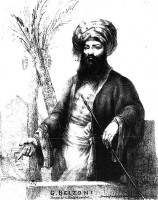
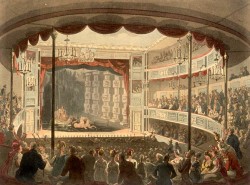
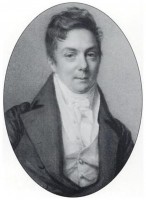
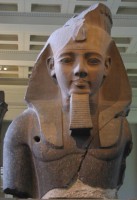
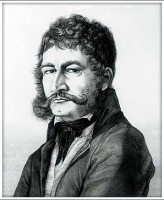
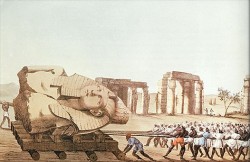
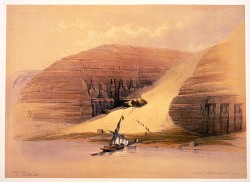

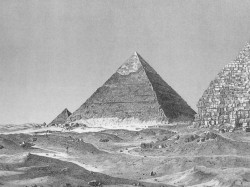
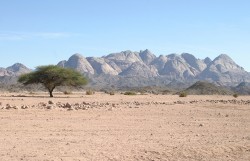
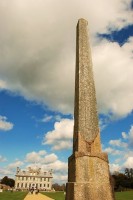
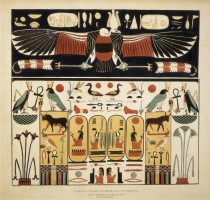
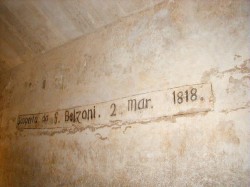
 By
By